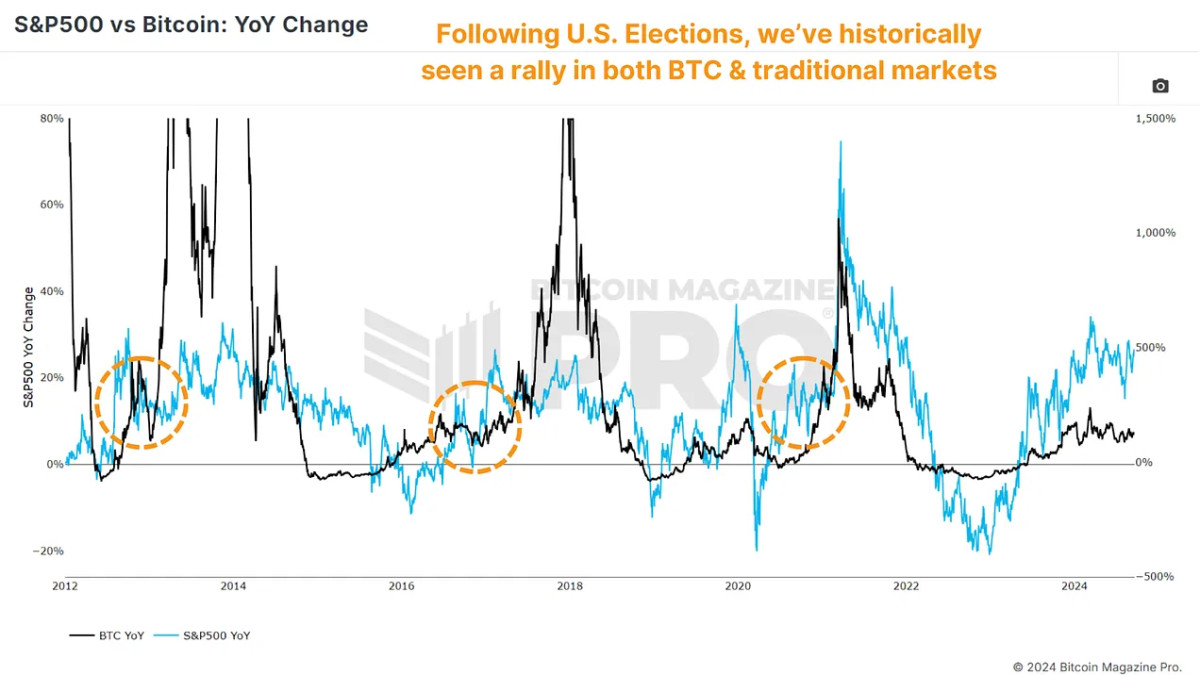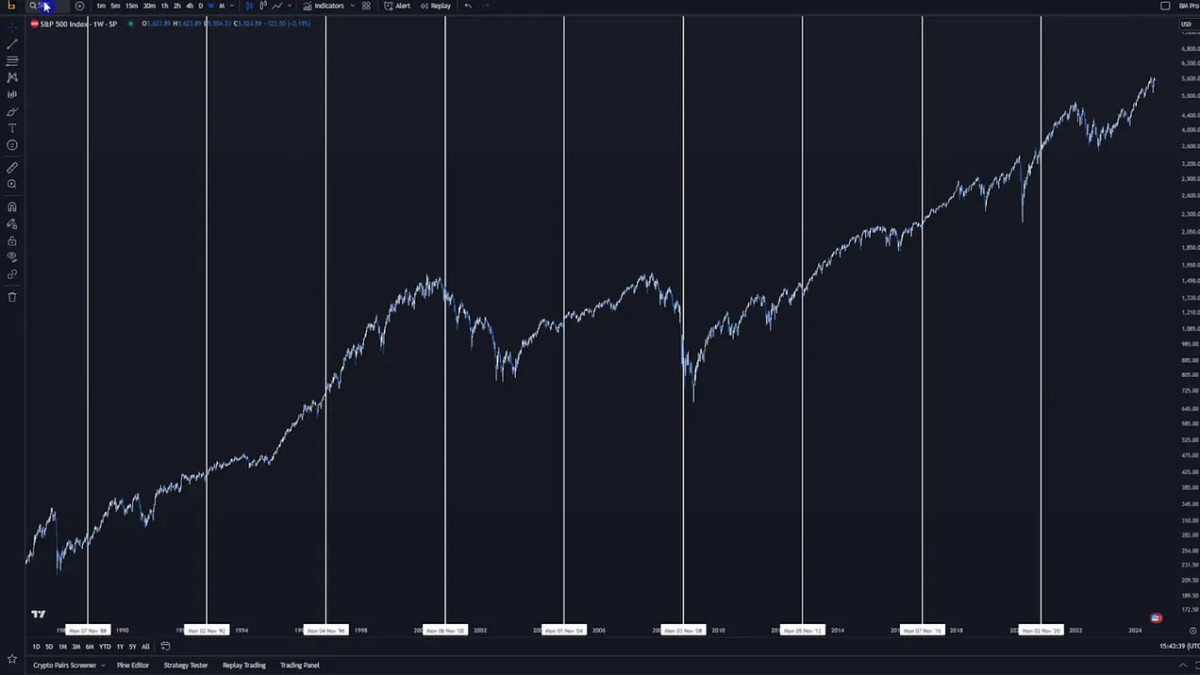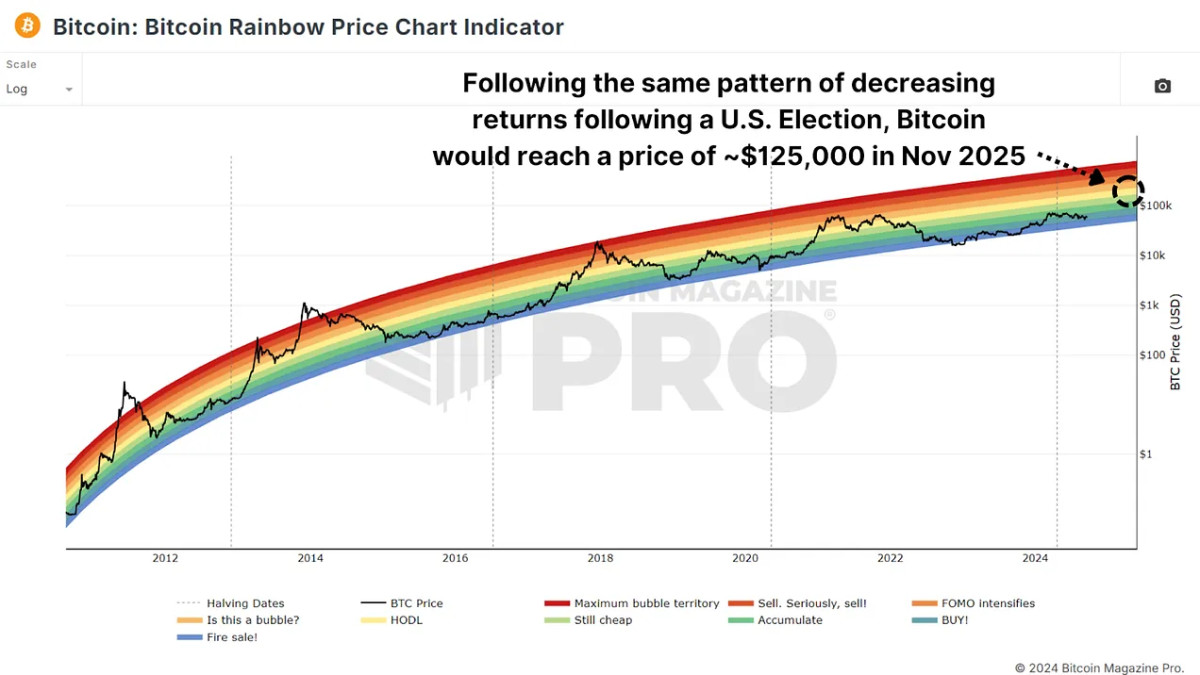As the US presidential election approaches, it is worth examining how past elections have influenced the price of bitcoin. Historically, the US stock market has shown notable trends around election periods. Given bitcoin’s correlation with stocks and, more importantly, the S&P 500, these trends could offer insight into what might happen next.
S&P 500 Correlation
bitcoin and the S&P 500 have historically had a bitcoin-portfolio/btc-vs-sp500-correlation/”>strong correlationparticularly during btc bull cycles and periods of risk appetite in traditional markets. This phenomenon could come to an end as bitcoin matures and becomes “decoupled” from stocks and its narrative as a speculative asset. However, there is no evidence yet that this is the case.
Post-election superior performance
The S&P 500 has typically reacted positively following U.S. presidential elections. This pattern has held steady over the past few decades, with the stock market often seeing significant gains in the year following an election. bitcoin-portfolio/btc-vs-sp500-correlation/”>S&P500 vs bitcoin YoY chart We can see when the election happens (orange circles) and the price action of btc (black line) and the S&P 500 (blue line) in the following months.

2012 Election: In November 2012, the S&P 500 posted year-over-year growth of 11%. A year later, this growth had soared to nearly 32%, reflecting a strong post-election market recovery.
2016 Election: In November 2016, the S&P 500 was up about 7% year-over-year. A year later, it was up about 22%, again showing significant post-election momentum.
2020 Election: The pattern continued in 2020. S&P 500 growth was around 17-18% in November 2020; by the following year, it had risen to nearly 29%.
A recent phenomenon?
This isn’t limited to the three previous elections when bitcoin existed. For a broader data set, we can look at the previous four decades, or ten elections, of S&P 500 returns. Only one year had negative returns twelve months after election day (2000, when the dot-com bubble burst).

Historical data suggests that whether the winning party is Republican or Democrat does not have a significant impact on these positive market trends. Instead, the bullish momentum has more to do with resolving uncertainty and increasing investor confidence.
How will bitcoin react this time?
As we approach the 2024 US presidential election, it is tempting to speculate on bitcoin’s potential performance. If historical trends hold, we could see significant price increases. For example:
If we experience the same percentage gains in the 365 days following the election as in 2012, the price of bitcoin could rise to $1,000,000 or more. If we experience the same as in the 2016 election, we could rise to around $500,000, and something similar to what happened in 2020 could see a $250,000 btc.
It's interesting to note that each occurrence has resulted in returns declining by roughly 50% each time, so perhaps $125,000 is a realistic target for November 2025, especially since that price and data align with the mid-bands of the bitcoin-rainbow-chart/”>Rainbow Price ChartIt's also worth noting that in all of those cycles, bitcoin actually experienced even larger peak cycle gains!

Conclusion
Data suggests that the period following the US presidential election is generally bullish for both the stock market and bitcoin. With less than two months until the next election, bitcoin investors may have reason to be optimistic about the months ahead.
For a more in-depth look at this topic, check out a recent YouTube video here: Will the US elections be bullish for bitcoin?






